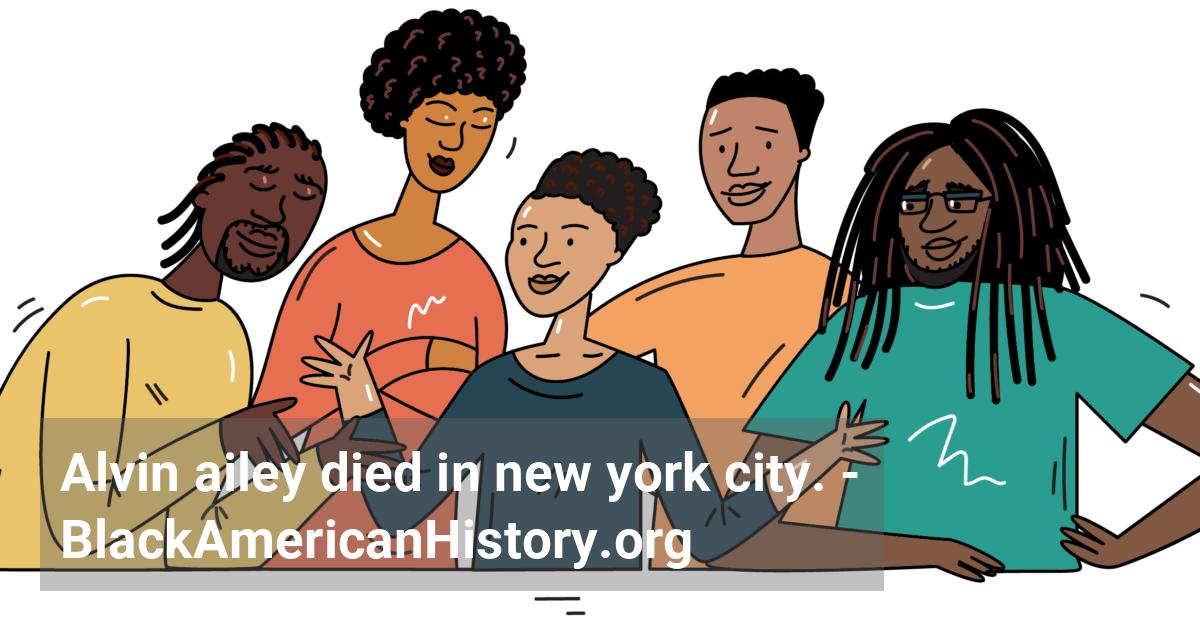Home / Full timeline / Alvin Ailey, Black American dancer and choreographer, dies of a blood disorder in New York City at age fifty-eight.
 Alvin Ailey, Black American dancer and choreographer, dies of a blood disorder in New York City at age fifty-eight.
Alvin Ailey, Black American dancer and choreographer, dies of a blood disorder in New York City at age fifty-eight.
1989 (Dec 1)
Alvin Ailey, Black American dancer and choreographer, died of a blood disorder in New York City at age fifty-eight. Ailey was born in the rural town of Rogers, Texas, where he faced discrimination at a very early age. Yet by the time of his death, Ailey had received New York's Handel Medallion and the Samuel H. Scripps American Dance Festival Award for lifetime contributions to modern dance. In 1988, he received Kennedy Center honors in Washington, DC., for lifetime achievement in the performing arts. He founded the Alvin Ailey American Dance Theater in 1958 and choreographed seventy-nine ballets. In 1961, Ailey created his best known work, "Revelations," which was based on his childhood experiences in Black Baptist churches. The dance became his company's rousing signature piece. Ailey also had a penchant for honoring the works of others whom he admired or with whose causes he sympathized. For example, he choreographed "For Bird with Love" as a tribute to jazz saxophonist Charlie "Bird" Parker, whose career was shortened by drug abuse. While Ailey refused to allow his company to perform in the Republic of South Africa, he choreographed, in collaboration with jazz drummer Max Roach, "Survivors," in honor of South African anti-apartheid activists Nelson and Winnie Mandela. Although Ailey retired from performing twenty years before his death, he created "a choreographic style distinctly his own—a combination of modern, ballet, jazz, and ethnic dance." Professor Richard Long, author of The Black Tradition in American Dance, called Ailey "the best-known American dancer in the world."
References:
- • Hornsby, Alton. Chronology of African-American History: Significant Events and People from 1619 to the Present. Detroit: Gale Research, 1995.
